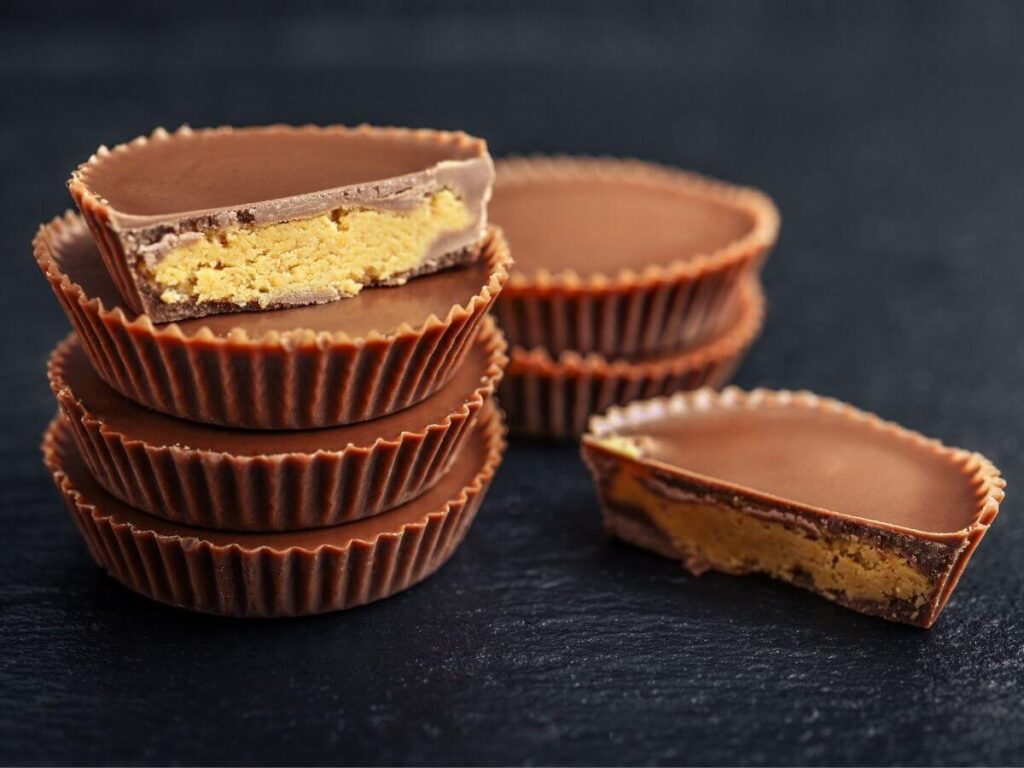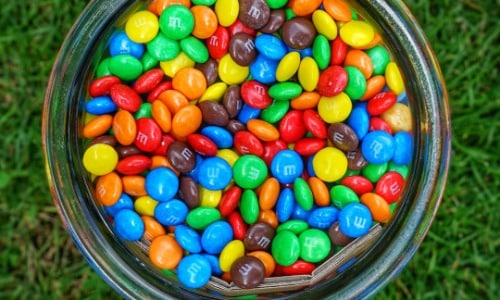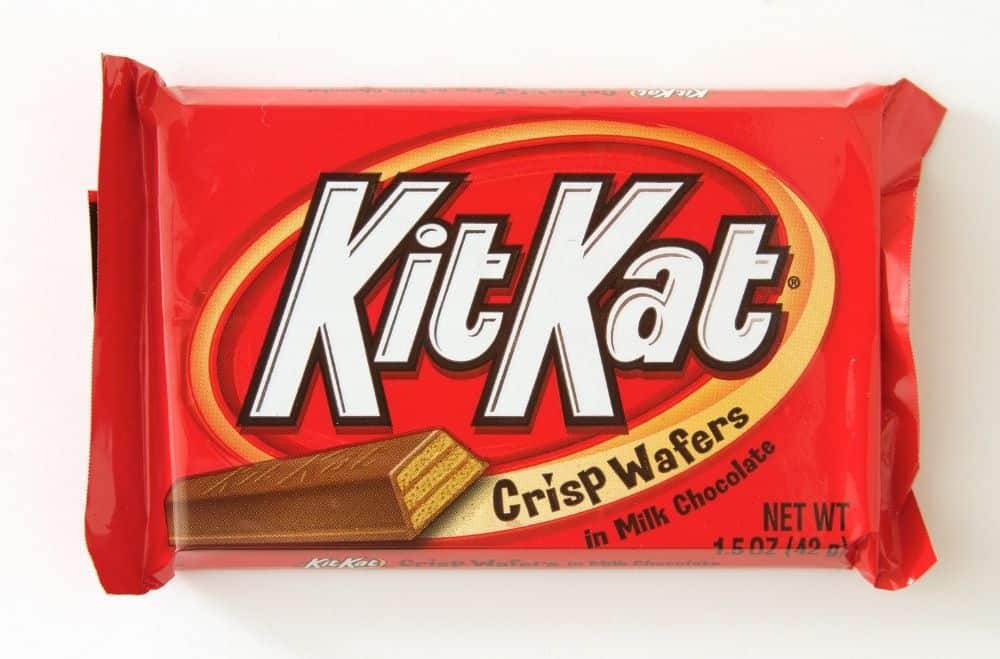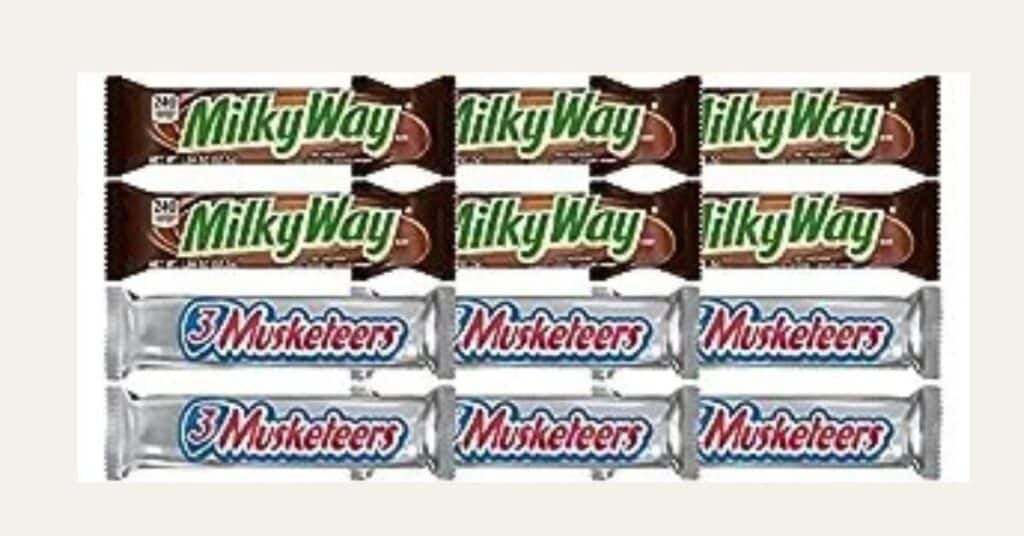In the world of confectionery, two giants stand out: Mars and Hershey. Both have been satisfying sweet tooths for over a century with their array of candy and chocolate products. Mars, known for favorites like M&M’s, Snickers, and Milky Way, has a rich history of creating some of the world’s most popular treats. On the other side, Hershey has been synonymous with classic American chocolate, with iconic products such as the Hershey’s Bar, Kisses, and Reese’s Peanut Butter Cups.

As you explore the offerings from these two confectionery powerhouses, you’ll find that Mars and Hershey not only offer a vast selection of candy but also reflect two distinct stories of growth and innovation within the industry. While Mars is a family-owned business that has expanded globally, Hershey prides itself on its deep roots in the heart of Pennsylvania, where its largest chocolate factory continues to operate.
Understanding the rivalry between Mars and Hershey takes you into a world where brand loyalty, product innovation, and marketing strategies play crucial roles. Both companies have carved out their market share by focusing on their strengths: Mars with its diverse portfolio and international reach, and Hershey with its dominance in the American market and commitment to quality. Each offers a unique perspective on how to capture the hearts (and taste buds) of candy lovers around the world.
Company Histories
Mars Incorporated and The Hershey Company are your quintessential archetypes of American confectionary success. Each has its unique roots and visionaries that have carved sweet paths through history.
Background of Mars Incorporated
Frank Mars began what would become a confectionery empire from his Tacoma, Washington kitchen. In 1911, he started crafting butter-cream candies which laid the foundation for Mars Chocolate. After some initial setbacks, by 1923, Mars was making a fresh start in Minnesota, creating the now-famous Milky Way bar. This innovation spearheaded the growth of Mars Incorporated, a company that would diversify broadly in the following decades, encompassing everything from candy to pet care.
The Hershey Legacy
Meanwhile, Milton Hershey established the Lancaster Caramel Company in the late 19th century, before seeing the potential in chocolate. In 1900, he sold the caramel company for a significant sum to focus on chocolate, founding Hershey’s Chocolate. He began by developing a formula for milk chocolate previously produced mainly by the Swiss. His business acumen resulted in the construction of a whole town, Hershey, Pennsylvania, which became not just the site for production but also a model community for employees. Hershey’s legacy is firmly embedded both in chocolate and in the sweet quality of life he cultivated for his workers.
Product Lines and Brands
As you explore the sweet rivalry between Mars and Hershey, you’ll uncover a rich tapestry of chocolates and candies that have become household names. Each company boasts an array of products tailored to satisfy your sugar cravings.
Mars’ Diverse Selection

Your taste buds may already be familiar with the bold flavors and classic candies under the Mars umbrella. Mars is the maker of M&M’s, a favorite treat characterized by its colorful candy shell and milk chocolate filling. They also produce the nougat-filled Snickers, the creamy Milky Way, crunchy and luscious Twix, and the whipped chocolate of 3 Musketeers. These candies have unique textures and tastes that cater to a variety of preferences.
- M&M’s: Available in several varieties including peanut, almond, and crispy.
- Snickers: Delivers a satisfying combination of nougat, caramel, and peanuts.
- Milky Way: Offers a smooth blend of nougat and caramel coated with chocolate.
- Twix: Features cookie bars topped with caramel and enrobed in milk chocolate.
- 3 Musketeers: Known for its fluffy whipped chocolate center surrounded by rich chocolate.
Hershey’s Signature Offerings

When you think of Hershey’s, your mind might immediately go to their signature chocolate bars. They have a storied lineup including the likes of Mr. Goodbar, which combines milk chocolate with peanuts. The company also takes pride in the crunchy Krackel bar, and they cater to coconut lovers with Almond Joy. And fans of peanut butter have found their match in Hershey’s iconic Reese’s Peanut Butter Cups. Hershey’s is even behind the distribution of Kit Kat bars in the United States, which are beloved for their crispy wafers and smooth chocolate coating.
- Mr. Goodbar: A perfect fusion of milk chocolate and fresh peanuts.
- Krackel: Filled with crispy rice, giving a satisfying crunch in every bite.
- Almond Joy: A delightful mix of coconut, almonds, and milk chocolate.
- Reese’s: Combine the flavors of milk chocolate and smooth peanut butter.
- Kit Kat: Snap into the classic crispy wafer covered in a layer of chocolate.
Market Presence and Influence
Mars and Hershey are titans in the confectionery landscape, each wielding significant market shares. Your understanding of their impact is crucial as you explore their competitive dynamics and expansion into international territories.
Competitive Market Share
Mars, Incorporated and The Hershey Company are leading competitors in the confectionery industry. They vie closely for market dominance. Here’s how they stand:
- Mars: With popular brands like M&M’s, Snickers, and Twix, Mars has cemented itself as a global powerhouse.
- Hershey: Known for its eponymous Hershey’s chocolate bar, Reese’s, and Kit Kat (in the US), Hershey maintains a robust presence.
Financials reveal the contest for market share through annual sales figures, often reflecting consumer preference and industry trends.
United States and Global Reach
United States:
- Mars: Secures a wide national brand influence, with a vast distribution network and targeted marketing strategies.
- Hershey: Dominates on its home turf, drawing upon deep-rooted American heritage to connect with consumers.
Global Reach:
- Mars: Has extended its reach into diverse markets like Brazil, India, and Ghana, adapting products to local tastes.
- Hershey: Also pursues global expansion but faces fierce competition overseas, making strategic moves in countries like Peru.
Both companies navigate complex regulatory environments set by governments, ensuring compliance to operate successfully.
Innovation and Consumer Response

When you think of Mars candy and Hershey, innovation in flavor and the ensuing consumer response are at the forefront of the competition between these confectionery powerhouses.
Flavor Variations and Quality
Mars and Hershey continually strive to satisfy your taste buds by offering a variety of flavors. Mars is known for incorporating bold choices, like the infusion of new, sweeter options in their candies. They ensure quality by sourcing high-grade cocoa and investing in their product development. On the other hand, Hershey focuses on the classic richness of its chocolate, with an emphasis on a distinct cocoa flavor that has stood the test of time.
- Mars:
- New flavors: Birthday Cake, Pumpkin Spice
- Quality parameters: Premium cocoa selection
- Hershey:
- Classic flavors: Milk Chocolate, Dark Chocolate
- Quality emphasis: Cocoa roasting process
Brand Loyalty and Customer Experience
Your experience with Mars and Hershey goes beyond just taste—it also involves the emotional connection you have with the brands. Mars capitalizes on innovative marketing strategies aiming to increase customer loyalty with memorable campaigns. Hershey takes a slightly different route, fostering brand loyalty through consistent quality and familiarity.
- Mars:
- Customer engagement: Interactive campaigns, Social media presence
- Innovation: Augmented reality in advertising
- Hershey:
- Customer trust: Time-honored recipes, Consistent quality
- Brand image: Emphasis on heritage and tradition
As you indulge in chocolate from either brand, you feel the impact of their efforts on innovation and understand why they tease your loyalty with every bite. Mars and Hershey’s rivalry takes shape not only in revenue and net worth but also in the hearts of consumers like you, with every piece of candy unwrapped.
Frequently Asked Questions
In this section, you’ll find succinct answers to common queries regarding the market dynamics and product ranges of Mars and Hershey, two titans in the candy industry.
Which company has a larger market share, Mars or Hershey?
Mars, Incorporated had a larger global market share compared to The Hershey Company, attributed to its diverse range of products and extensive international presence.
Can you list some of the popular brands that fall under the Mars candy lineup?
Your familiar Mars candy favorites include M&M’s, Snickers, Twix, Milky Way, and Skittles, each with its unique flavor and appeal.
What are the main brands produced by Hershey?
Hershey is known for its Hershey’s Chocolate Bars, Reese’s Peanut Butter Cups, Hershey’s Kisses, and Almond Joy, among other beloved treats.
How do Mars and Hershey differ in their product offerings?
Mars offers a wide variety of confections, including chocolate, gum, mints, and fruity confections. Hershey, while known for its chocolate products, has expanded into snacks and licensed products to diversify its offerings.
Have there been any collaborations between Mars and Hershey?
To date, Mars and Hershey have not collaborated, as they are competitors in the confectionary space.
What are the major differences between Mars, Hershey, and Nestle in the candy industry?
Mars and Hershey are U.S.-based companies focusing on chocolate and confectionery. Nestle, while also a key player in the industry, has a broader portfolio including dairy products, frozen food, and even pet care, and it hails from Switzerland. In the candy sector, Nestle’s approach is diverse, with a wide range of international chocolate and candy brands.
